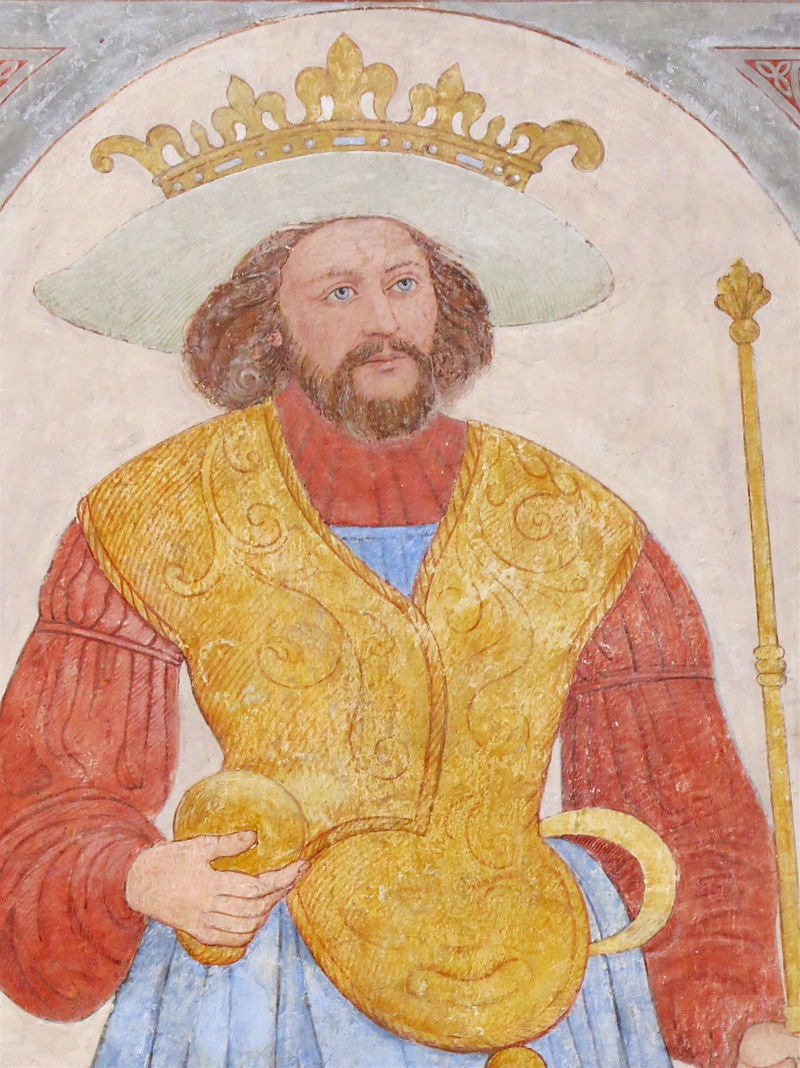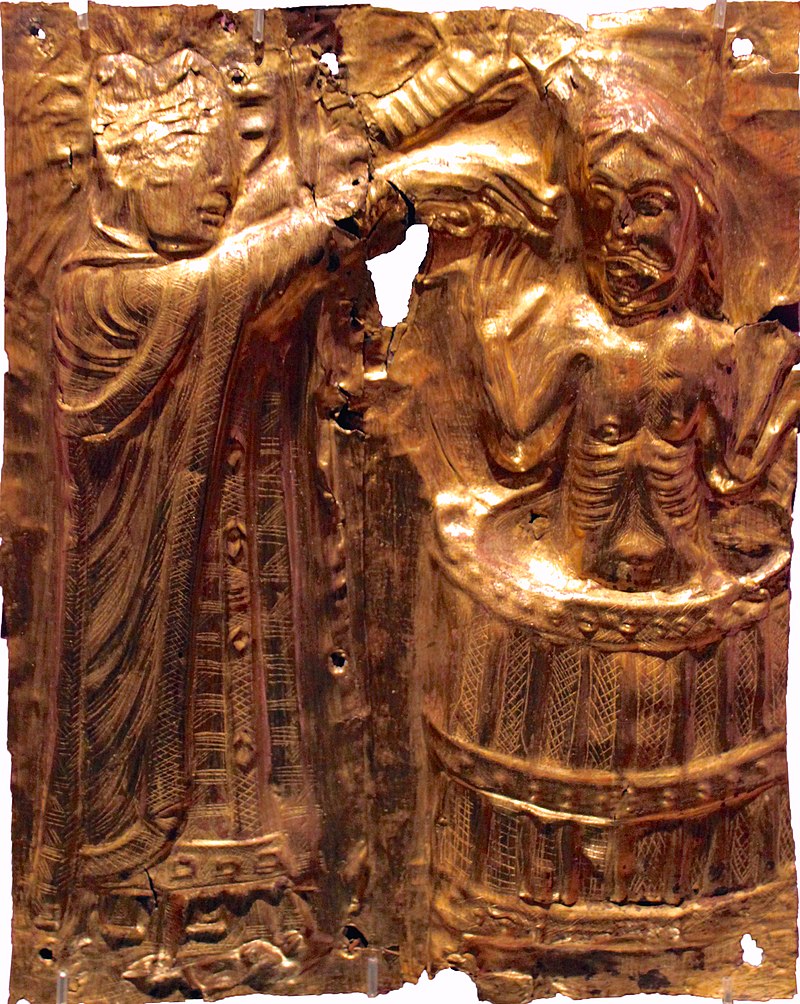by Susan Flantzer
© Unofficial Royalty 2025
Luxembourg, a microstate in Western Europe, is bordered by Belgium, Germany, and France. It is the only remaining Grand Duchy. During its history, Luxembourg has been a part of several countries. At the Congress of Vienna in 1815, Luxembourg was made a Grand Duchy and united in a personal union with the Kingdom of the Netherlands. The King of the Netherlands was also the Grand Duke of Luxembourg.
The Grand Duchy of Luxembourg remained in personal union with the Netherlands until the death of King Willem III of the Netherlands in 1890. His successor was his daughter Queen Wilhelmina of the Netherlands who could not inherit the throne of the Grand Duchy of Luxembourg due to the Salic Law which prevented female succession. The new Grand Duke of Luxembourg was Adolphe who was Duke of Nassau until it was annexed to Prussia in 1866. The Grand Ducal Family was then, and still is, members of the House of Nassau-Weilburg, a branch of the House of Nassau.
Adolphe’s son Grand Duke Guillaume IV had six daughters and no sons so he had to do a bit of tinkering with the succession law. The law was changed to the Semi-Salic Law, where succession first goes to all the male dynasts and then to female dynasts only upon the extinction of all the male dynasts. This allowed his two elder daughters to succeed to the throne. Eventually, In 2011, the succession law was changed to absolute primogeniture whereby the succession passes to the eldest child of the sovereign regardless of gender, and males and females have equal succession rights.
- Unofficial Royalty: Grand Duchy of Luxembourg Index
- Unofficial Royalty: Line of Succession to the Throne of Luxembourg
His Royal Highness and Her Royal Highness
In earlier practice, a reigning grand duke, his heir apparent, and their spouses would use the style of Royal Highness. The male line descendants of a reigning grand duke, other than the heir, would use the style Grand Ducal Highness. This practice was followed by the ruling families of Luxembourg, Hesse and by Rhine, and Baden. The current practice of Princes and Princesses of Luxembourg and Princes and Princesses of Nassau holding the style Royal Highness refers to their Bourbon-Parma origins. See Prince and Princess of Bourbon-Parma below.
The Monarch of Luxembourg

Grand Duke Henri of Luxembourg; Credit – Wikipedia
The monarch of Luxembourg is His/Her Royal Highness Grand Duke/Grand Duchess of Luxembourg. His Royal Highness Grand Duke Henri of Luxembourg is the current monarch of Luxembourg. On October 7, 2000, Grand Duke Jean of Luxembourg abdicated, and his son Henri became Grand Duke of Luxembourg. In his Christmas Eve speech on December 24, 2024, Grand Duke Henri of Luxembourg announced that he would abdicate in favor of his eldest child Hereditary Grand Duke Guillaume of Luxembourg on October 3, 2025.
The Consort of Luxembourg

Grand Duchess Maria Teresa of Luxembourg; Credit – Wikipedia
The wife of the Grand Duke of Luxembourg is Her Royal Highness Grand Duchess <name> of Luxembourg. The current consort of Luxembourg is Her Royal Highness Grand Duchess Maria Teresa of Luxembourg, born Maria Teresa Mestre y Batista Falla in Havana, Cuba.
In 1919, Grand Duchess Charlotte of Luxembourg married her first cousin Prince Felix of Bourbon-Parma, the only time so far, when there was a male consort. Felix retained his title as Prince of Bourbon-Parma and was created a Prince of Luxembourg in his own right.
The Heir to the Throne of Luxembourg – Hereditary Grand Duke or Hereditary Grand Duchess

Prince Guillaume, Hereditary Grand Duke of Luxembourg; Credit – Maison du Grand-Duc / Sophie Margue
His Royal Highness Prince Guillaume, Hereditary Grand Duke, the eldest child of Grand Duke Henri is the current Hereditary Grand Duke of Luxembourg. Since June 2011, Luxembourg’s line of succession has been based on Cognatic (Absolute) Primogeniture, beginning with the children of Grand Duke Henri. The succession passes to the eldest child of the sovereign regardless of gender with males and females having equal succession rights.
The title Hereditary Grand Duke or Hereditary Grand Duchess is held by the heir apparent to the throne of Luxembourg. The eldest child of the reigning Prince or Princess of Luxembourg may be granted the title of Hereditary Grand Duke or Hereditary Grand Duchess of Luxembourg.
Prince and Princess of Luxembourg
Prince Felix of Luxembourg, the second child of Grand Duke Henri, with his wife Princess Claire of Luxembourg with the eldest two children Princess Amalia of Nassau and Prince Liam of Nassau
The children of the reigning Grand Duke/Grand Duchess or the heir apparent, the Hereditary Grand Duke/Hereditary Grand Duchess, hold the titles Prince/Princess of Luxembourg and the additional title Prince/Princess of Nassau with the style of Royal Highness. The wives of Princes of Luxembourg and Princes of Nassau (below) hold the female counterparts of their husband’s titles.
Prince and Princess of Nassau
The Grand Duke of Luxembourg uses the Duke of Nassau as his secondary title. Prince or Princess of Nassau is used as a title by the other members of the Grand Ducal family. The Nassau titles derive from Adolphe, Duke of Nassau who became Grand Duke of Luxembourg in 1890. The Duchy of Nassau was an independent state between 1806 and 1866, located in the current German states of Rhineland-Palatinate and Hesse.
Male line descendants of Grand Duchess Charlotte of Luxembourg who are not the children of a Grand Duke or Hereditary Grand Duke and their wives are titled Prince/Princess of Nassau with the style of His/Her Royal Highness.
For instance, the children of His Royal Highness Prince Félix of Luxembourg, the second child of Grand Duke Henri, are male line descendants and are not children of a Grand Duke of Hereditary Grand Duke. They are styled His/Her Royal Highness and titled Princess Amalia of Nassau, Prince Liam of Nassau, and Prince Balthasar of Nassau.
Prince and Prince of Bourbon-Parma

Prince Felix of Bourbon-Parma, Prince of Luxembourg; Credit – Wikipedia
In 1919, Grand Duchess Charlotte married her first cousin Prince Felix of Bourbon-Parma, the son of Roberto I, Duke of Parma and his second wife Infanta Maria Antonia of Portugal. Prince Felix held the style His Royal Highness. Since then, members of the Grand Ducal Family of Luxembourg, besides being members of the House of Nassau-Weilburg, a branch of the House of Nassau, are also members of the House of Bourbon-Parma with the title of Prince or Princesses of Bourbon-Parma and the style Royal Highness.
This article is the intellectual property of Unofficial Royalty and is NOT TO BE COPIED, EDITED, OR POSTED IN ANY FORM ON ANOTHER WEBSITE under any circumstances. It is permissible to use a link that directs to Unofficial Royalty.
Works Cited
- Autoren der Wikimedia-Projekte. (2004). Adelsgeschlecht. Wikipedia.org; Wikimedia Foundation, Inc. https://de.wikipedia.org/wiki/Haus_Nassau
- Legilux. (2025). Public.lu. https://legilux.public.lu/eli/etat/adm/dec/2012/06/11/n1/jo
- Official website of the Grand Ducal Court of Luxembourg. (n.d.). Www.monarchie.lu. https://monarchie.lu/en
- Wikipedia Contributors. (2024). Duchy of Nassau. Wikipedia; Wikimedia Foundation.
- Wikipedia Contributors. (2024). House of Bourbon-Parma. Wikipedia; Wikimedia Foundation.
- Wikipedia Contributors. (2024, December 27). House of Nassau-Weilburg. Wikipedia; Wikimedia Foundation.
- Wikipedia Contributors. (2024). Monarchy of Luxembourg. Wikipedia; Wikimedia Foundation.
- Wikipedia Contributors. (2024). Nassau Family Pact. Wikipedia; Wikimedia Foundation.









 (
(



















